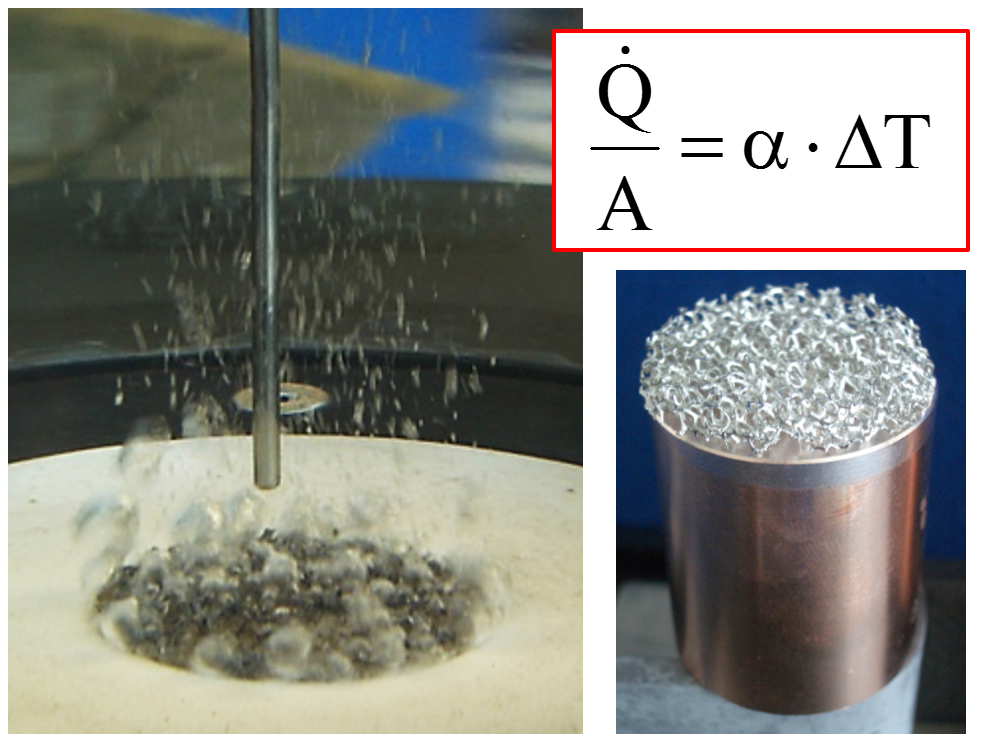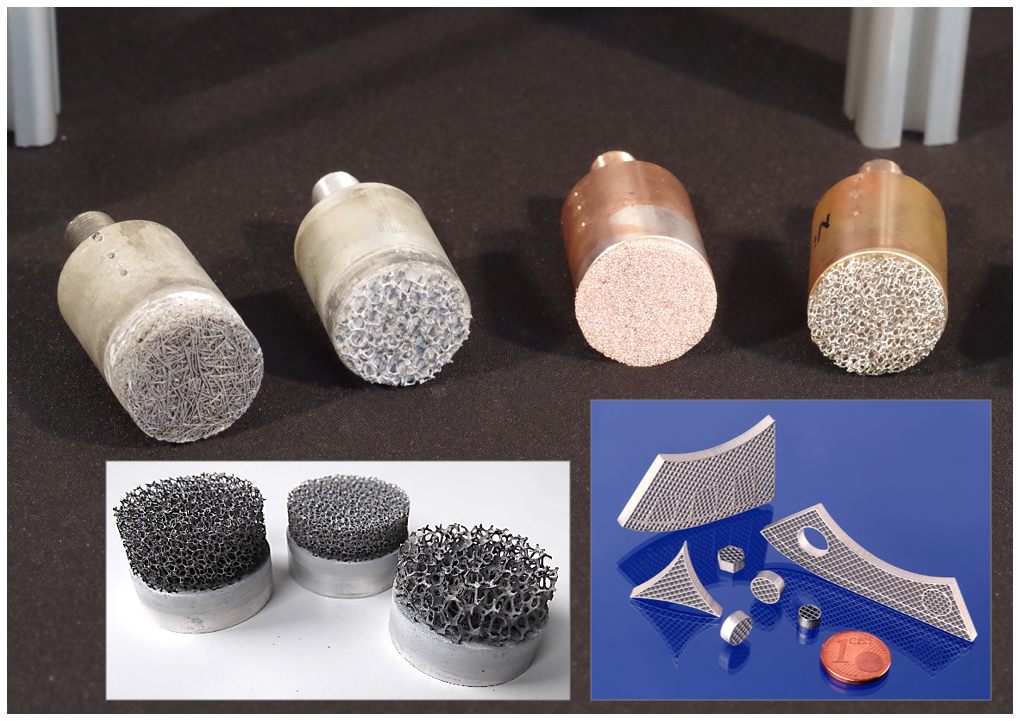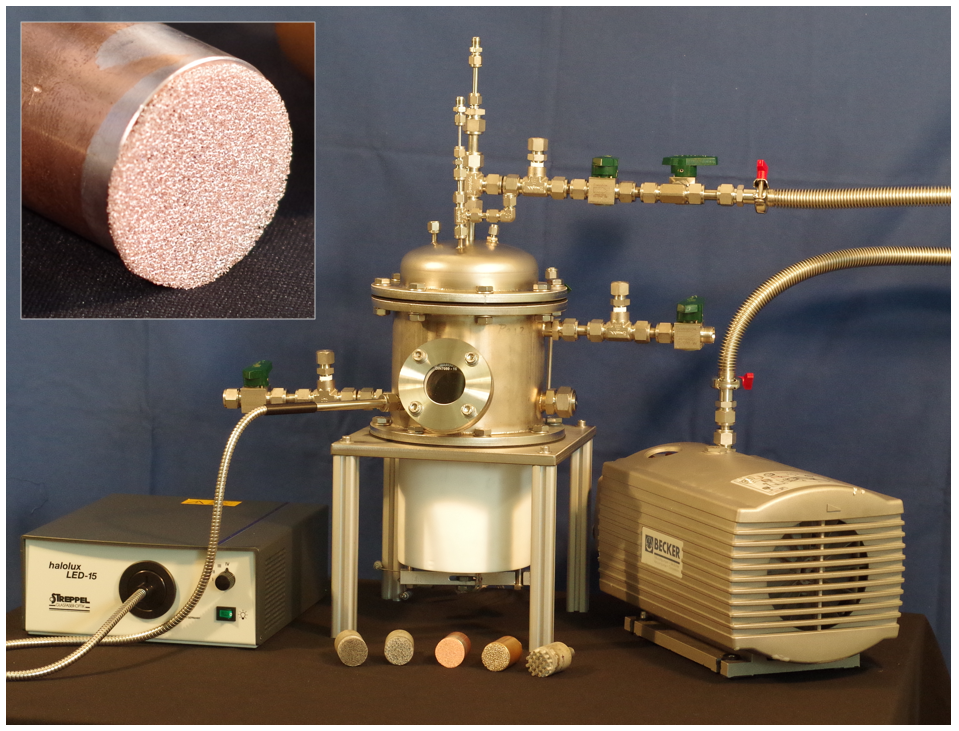Motivation and Business Areas

The optimization of the heat transfer during evaporating a liquid is of enormous technological importance, since evaporators are widely used as heat exchangers: in the generation of process steam, in refrigeration machines and heat pumps and in component cooling and temperature control.
For a given temperature difference, the area-related evaporator capacity depends only on the heat transfer coefficient a, which can be enormously increased by structuring the evaporator surface. Requirements on the structures are
• a high volume-related surface and good thermal conductivity of the structure and
• a high number of bubble nucleation sites and sufficient porosity for bubble removal.
Powder metallurgically produced structures - possibly with additional coatings - are optimally suited for this application.
We offer you the full service:
• experimental analysis of different evaporator structures under defined conditions,
• direkte Strukturoptimierung anhand der Ergebnisse mit werkstoff- und fertigungstechnischem IFAM-Knowhow.
 Fraunhofer Institute for Manufacturing Technology and Advanced Materials IFAM
Fraunhofer Institute for Manufacturing Technology and Advanced Materials IFAM
